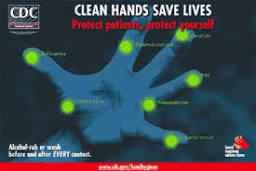A Malaysian doctorate student is causing a buzz in the medical research field.
Lam Shu Jie (pic), 25, and her team of researchers may have found a solution to the antibiotic-resistant bacteria commonly known as “superbugs”.
 The team from Melbourne School of Engineering published a paper on Monday on a new treatment method.
The team from Melbourne School of Engineering published a paper on Monday on a new treatment method. Shu Lam A 25 year-old Melbourne Uni student has made a discovery that could be a game-changer for modern medicine and avert a serious health crisis.
The method uses star-shaped structures called structurally nano-engineered anti-microbial peptide polymers (SNAPPs).
SNAPPs are found to be highly effective in killing Gram-negative bacteria – a class of bacteria which is antibiotic resistant – without hurting healthy cells, according to the team’s article in Nature Microbiology.
Unlike antibiotics which attempt to kill the bugs chemically, the star-shaped protein molecules defeat them by “ripping apart their cell walls”.
She also found that it was important to have outside interest due to the research work's long hours and possibility of failure..
"I've just watched the Korean movie called 'Train to Busan'. I also like trying new cuisines and exploring cafes here because the food culture's very strong," she laughed..
She lamented that the initial experiments were daunting, which left her in fear..
"My experiments kept failing, but later I learned what went wrong. I like the investigating part of research. It's beyond being in the labs or reading books; it's also about speaking with other experts," she said..
The second child of three siblings still has strong ties with home..
"I try to come back for the Chinese New Year because I miss my family," she said while lamenting the loss of her father last year..
Despite her supervisor Prof. Greg Qiao reportedly saying that her research is still at its early stage, Lam has plans to continue her research in the field, while in the long-term, she expressed hope to establish a research group with experts upon returning home and also lecture..
She will complete her PhD in two months time..
The scientific breakthrough was picked up by many news portals including Science Daily, the Australian Broadcasting Corporation and the South China Morning Post.
Lam told South China Morning Post that she spent the past three and a half years researching polymers and how they can be used to kill antibiotic-resistant bacteria.
The Batu Pahat lass, who is to submit her PhD thesis in two months, admitted that she hoped to continue to work in research, rather than opt for medical training like her father who is a paediatrician.
“I think my career will be mainly focused on research in the medical field,” said Lam.
Her supervisor Prof Greg Qiao, who is also one of the 10 co-authors of the scientific journal, said the research was still in its early stages.
He told South China Morning Post that more work was needed to verify the best formula and structure, as well as determine dosage and test for toxicity, before the substance could be deemed safe for human use.
“Even with all the money in the world, it would take at least five years to get to the first human-test stage because many resources and much work are needed before commercialisation,” he said.
Superbugs stem from misuse or overuse of antibiotics, according to the World Health Organisation.
It lists anti-microbial resistance as a global concern that threatens our ability to treat common infectious diseases, resulting in prolonged illness, disability and death. The Star/Asia News Network.
Related:
The 25-year-old Malaysian Chinese who may have just solved the ...
www.scmp.com › This Week in Asia › Society
South China Morning Post
“I think my career will be mainly focused on
research in the medical field,” said Lam, who has already begun pursuing
her passion in polymer research during her four-year undergraduate
degree in chemical and biomolecular engineering.
“As an undergraduate, she would come to our group for summer work when she had time,” Qiao recalled of Lam.
These days when Lam finds the rare downtime
between researching polymers, she likes to watch TV and explore the
city. “Being in Melbourne, I have developed an interest in food and
really like exploring new cafes and brunch places, so I spend a lot of
time trying new food and walking around when I’m not working,” Lam said.
Lam moved to Australia for her foundation
studies after finishing primary and secondary school in Malaysia, and is
likely stay on in Australia after graduating at the end of the year.
“My main preference would be to continue to stay
in research, but I am also looking at career fields outside of polymer
research,” she said. “This research is going in different directions,”
said Qiao. “One is killing the bug, the other is treating cancer.”
Her group is also examining the use of polymers
as a drug carrier for cancer patients as well as the treatment of other
diseases.
A key project at the moment is the synthetic
transplant of cornea in the eye, which involves the use of polymers
grown from the patient’s own cells in the lab to replace the damaged
cornea.
The operation has already been tested multiple
times successfully on sheep, and Qiao hopes to begin the first human
trials in Melbourne within two years, working with the Melbourne Eye and
Ear Hospital.Related posts:
 Superbug lurking! Drug resistance now a nightmare!
Superbug lurking! Drug resistance now a nightmare!
Mar 18, 2013 ... In addition, no new major antibiotics have been made since the late 1980's
because antibiotics can have a short lifespan before superbugs ...
May 5, 2014 ... WHO's Alarm Bells: Antibiotic Resistance Now a 'Major Threat to Public ... There
hasn't been a new class of antibiotics developed since the late ..

May 6, 2014 ... ... Bacteria , hand hygiene , Health , health and wealth , Hepatitis , Immunity ,
Medicare , medicines , MRSA , superbugs , Vaccines , WHO ...














